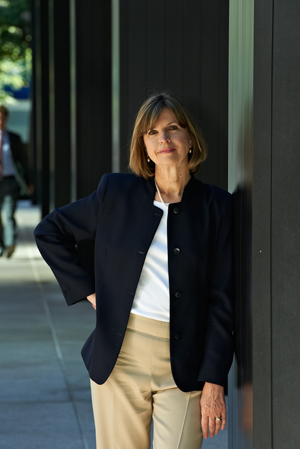Can public-interest design become a viable alternative to traditional practice?
Last month Salon published an article titled “The Architecture Meltdown.” The piece, by Scott Timberg, detailed the high unemployment rates, the shrinking fees, and the tough climate for fresh architecture grads, weighed down by heavy student debt. It’s so bad, said one architect, Guy Horton (a contributor to architectural record), that architecture has become “the new English major.” The article’s author blamed the poor economy, of course, but he also tore into the profession as the designer of its own demise. While the media has lionized the starchitect—the solo creative genius at the top—the profession has perpetuated a culture in which architectural acolytes toil for years for poor pay, with no guarantee of eventually making a decent living. Now “architecture is exposed to the realities of the marketplace like few other fields,” said Timberg.

A few days later, Thomas Fisher, dean of the College of Design at the University of Minnesota, responded in a blog post on Metropolis. “Nontraditional job opportunities for architects have never been better,” Fisher wrote, “and while it may take some time for these markets to mature, they seem likely to grow much faster in years to come.”
One of those markets is public-interest design. While architecture has largely been patronized, in Timberg’s description, by the top 1 percent, Fisher sees a shift in architectural services for the other 99 percent. Humanitarian design, often funded by grants, is on the rise, providing work and a sense of purpose for a growing legion of (mostly young) practitioners.
No one is pretending that designing for social change can solve the challenges many in the profession face. Most architects aren’t able to cast off responsibilities to colleagues, families, and communities to run off to save the world through design. One mid-career architect who left a firm to work for Architecture for Humanity in Haiti can’t subsist on the fellowship stipend and must use savings to cover a mortgage and a child’s college tuition back home in the United States. Architects, whether on a mission to do good, or on the staff of a traditional firm, deserve fair pay for their expertise.
While these ideas have been bubbling around the blogosphere, we’ve been reporting on trends in activist architecture. What we bring you in this special issue is a sampling of projects, programs, and people who are building for social change in the United States, Latin America, Africa, the Caribbean, and Japan. Of course, there are countless other such projects, of all sizes, around the globe; a few more of them will be featured on archrecord.com over the next month.
Activist architecture is not new—and the most recent groundswell began well before the onset of the recession. An emerging generation of architects has been reflecting, for some years now, professional values that the Salon article did not acknowledge—a move away from the glorification of the star architect toward a more collaborative design process among architects and across disciplines; a global awareness and social consciousness; and a concern with local conditions as part of a more holistic approach to sustainability.
Indeed, one significant aspect of the new architecture detailed in the pages ahead is sustainability. These are projects almost always built with local materials, methods, and labor—not Western typologies exported to other countries, but a hybrid of design ideas customized for conditions on the ground. The Boston-based MASS Design Group built the Girubuntu Primary School of bricks and bamboo with local labor in Rwanda. The brilliant Francis Kéré, who returns regularly from his practice in Berlin to build in his home village in Burkina Faso, brings Modernist ideas adapted to vernacular construction techniques, even using—ingeniously—local clay pots.
For most practitioners, social architecture begins at home. Architects with a little extra time during this downturn, who engage in their communities or find work in neighborhoods in need, can demonstrate to local leaders that good design is essential in all civic building and infrastructure—not just in high-end construction. That’s a vital message for the future of the profession.
One day, when the recession is officially declared over, the practice of architecture is likely to have changed. As Fisher points out, architects who look beyond the traditional studio—to conduct research or collaborate with other disciplines or to design in the public interest— are likely to find that the way they’re trained to think is highly valued. But for now, however you practice or connect to the world of design, there are lessons and inspiration in building for social change.






Post a comment to this article
Report Abusive Comment